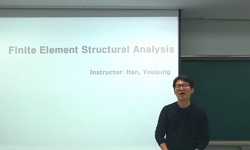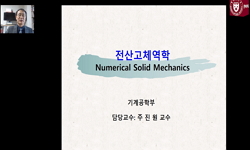다양한 고장 모드를 분석하면서 태양광 모듈의 수명을 정량화하는 데 시뮬레이션 도구가 점점 더 많이 사용되고 있다. 이와 관련하여 유한 요소법의 사용은 공정에 의한 응력부터 현장 조건...
http://chineseinput.net/에서 pinyin(병음)방식으로 중국어를 변환할 수 있습니다.
변환된 중국어를 복사하여 사용하시면 됩니다.
- 中文 을 입력하시려면 zhongwen을 입력하시고 space를누르시면됩니다.
- 北京 을 입력하시려면 beijing을 입력하시고 space를 누르시면 됩니다.
태양광 모듈 내 응력 및 변형률 계산 방법 고찰 I = Methods for calculating stress and strain in solar modules: a review – part I
한글로보기https://www.riss.kr/link?id=A108974784
- 저자
- 발행기관
- 학술지명
- 권호사항
-
발행연도
2023
-
작성언어
-
- 주제어
-
KDC
500
-
자료형태
학술저널
-
수록면
41-59(19쪽)
- 제공처
-
0
상세조회 -
0
다운로드
부가정보
국문 초록 (Abstract)
다양한 고장 모드를 분석하면서 태양광 모듈의 수명을 정량화하는 데 시뮬레이션 도구가 점점 더 많이 사용되고 있다. 이와 관련하여 유한 요소법의 사용은 공정에 의한 응력부터 현장 조건에 이르기까지 다양한 시나리오에 대한 응력 수준을 정량화할 수 있는 유연성과 능력으로 인해 특히 관심을 끈다. 모듈 구성 요소의 열-기계적 거동은 셀 균열, 상호 연결 실패, 유리 파손, 박리 등과 같은 일반적인 현장 고장과의 연관성 때문에 종종 고려되지만, 사용되는 접근 방식, 고려되는 다양한 입력 및 결과는 매우 분산되어 있으며 때로는 상충되기도 한다. 이 연구는 상업용 및 새로운 태양광 모듈 기술에 대한 열역학적 유한 요소 시뮬레이션을 통해, 보고된 시뮬레이션 접근 방식과 그 결과를 체계적으로 검토하며, 사용된 재료 모델, 경계 조건, 기타 가정과 같은 다양한 입력의 영향과 유효성에 대해 논의한다. 학습한 내용과 모범 사례는 향후 시뮬레이션에서 활용하여 태양광 모듈에 대한 유한 요소 모델의 신뢰성 설계 기능을 확장하고 가속화할 수 있다.
다국어 초록 (Multilingual Abstract)
Simulation tools are increasingly being used to quantify the lifetime of photovoltaic modules, giving valuable insight into different failure modes. In this regard, the use of finite element methods is of particular interest due to their flexibility a...
Simulation tools are increasingly being used to quantify the lifetime of photovoltaic modules, giving valuable insight into different failure modes. In this regard, the use of finite element methods is of particular interest due to their flexibility and ability to quantify stress levels for a variety of scenarios, from process-induced stresses to field conditions. The thermo-mechanical behavior of module components is often considered because of its association with common field failures such as cell cracking, interconnection failure, glass breakage, delamination, etc., but the approaches used, the various inputs considered, and the results are highly dispersed and sometimes conflicting. Through thermodynamic finite element simulations of commercial and emerging solar module technologies, this study systematically reviews reported simulation approaches and results, and discusses the impact and validity of various inputs, such as material models, boundary conditions, and other assumptions used. Lessons learned and best practices can be utilized in future simulations to extend and accelerate the reliability design capabilities of finite element models for photovoltaic modules.
목차 (Table of Contents)
- I. 서론
- II. 정의 및 방법론
- III. 태양광 모듈 프레임과 랙에 적용된 FEM
- IV. 태양광 모듈 전면 커버에 적용된 FEM
- V. 태양광 모듈의 인캡슐런트에 적용된 FEM
- I. 서론
- II. 정의 및 방법론
- III. 태양광 모듈 프레임과 랙에 적용된 FEM
- IV. 태양광 모듈 전면 커버에 적용된 FEM
- V. 태양광 모듈의 인캡슐런트에 적용된 FEM
- VI. 결론
- 참고문헌
동일학술지(권/호) 다른 논문
-
코깅 토크 및 토크 리플을 고려한 매입형 영구자석 전동기의 형상 최적화
- 호서대학교 공업기술연구소
- 원요섭(Yo-Seop Won)
- 2023
-
- 호서대학교 공업기술연구소
- 한상만(Sangman Han)
- 2023
-
- 호서대학교 공업기술연구소
- 장효정(Hyo-Jung Jang)
- 2023
-
ECAP법으로 제작한 미세 결정립을 가진 Al-Mg-Sc 합금의 초소성에 관한 연구
- 호서대학교 공업기술연구소
- 한창석(Chang-Suk Han)
- 2023




 스콜라
스콜라






